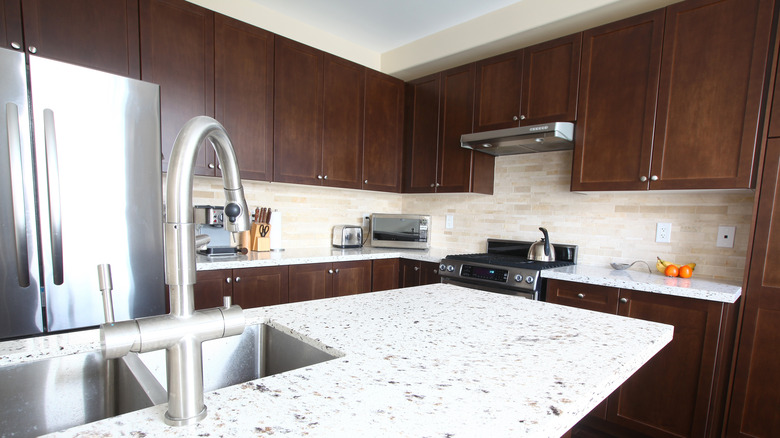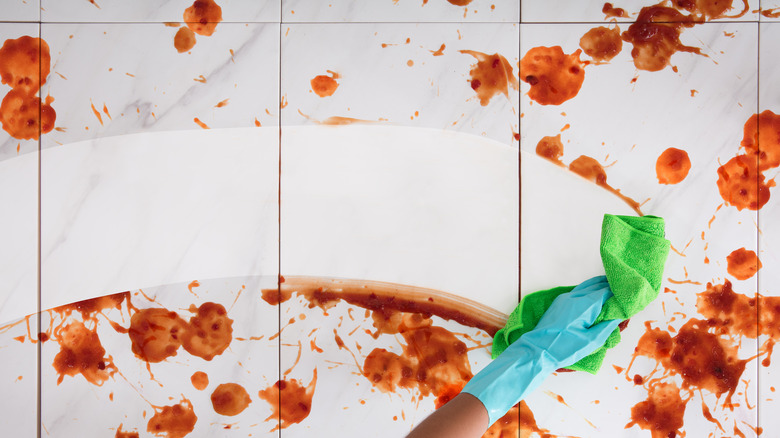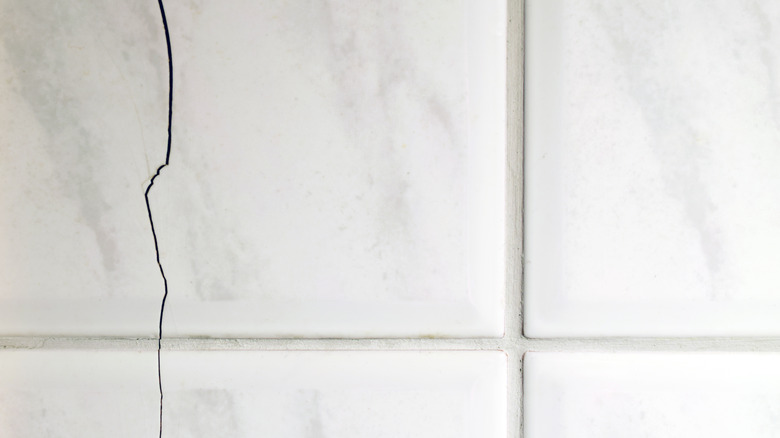Why You Should Think Twice Before Installing A Limestone Backsplash
Installing a limestone backsplash may seem like a no-brainer for those aiming to enhance their kitchen's aesthetic. The allure of its natural beauty and timeless charm can be tempting. However, the decision to opt for limestone warrants careful consideration, as it comes with its fair share of potential drawbacks.
Firstly, let's address the issue of practicality. While the visual appeal of limestone is undeniable, its porous nature can quickly become a source of concern. The very quality that gives it a distinctive look also makes it susceptible to stains and discoloration. This means that the seemingly elegant surface might require constant vigilance to prevent irreversible damage from spills and splatters in a busy kitchen.
Another factor to bear in mind is the regular maintenance demanded by limestone. Homeowners opting for this material should be prepared for the ongoing task of sealing to keep your natural stone looking its best and to protect against its porous vulnerabilities. This additional step in the upkeep routine can be seen as both a time-consuming hassle and an added cost — both factors that could sway decisions when choosing a backsplash material. A limestone backsplash is also vulnerable to etching, a potential consequence of contact with everyday kitchen items like citrus juices or vinegar. This sensitivity means that even unintentional spills during daily cooking or cleaning routines may lead to lasting marks, adding an extra layer of caution in the kitchen environment.
Hygiene considerations
Moving beyond the surface appeal, the hygiene aspect of a limestone backsplash becomes a focal point of consideration. The inherent porosity of limestone, while contributing to its distinctive look, raises concerns about its ability to maintain a hygienic environment — which might be a big mistake when considering a new kitchen backsplash. Unlike non-porous surfaces that resist the infiltration of liquids, limestone can absorb and harbor moisture, which can cause problems.
Routine cleaning may address visible stains, but a thorough elimination of all potential microbial hazards remains an issue: Bacteria from foods like raw chicken can get trapped inside the limestone and multiply at an alarming rate. Moisture trapped within the limestone microholes can contribute to the development of mold, a concern that extends beyond mere aesthetics. Mold growth not only compromises the visual appeal of the backsplash but also poses health risks to the occupants of the home. Those with respiratory issues or allergies may find the presence of mold particularly problematic, making it crucial to assess whether the allure of limestone is worth the potential health implications.
In summary, the hygiene aspect of a limestone backsplash demands careful consideration. Homeowners should weigh the visual appeal of limestone against the practical implications of its porosity, assessing their willingness to adopt stringent cleaning measures to ensure a hygienic space for food preparation and daily activities.
Cost effectiveness and durability
Turning attention to the financial aspect, the seemingly affordable choice of limestone for a backsplash necessitates scrutiny. While the initial cost may appear reasonable, it's essential to factor in the long-term expenses associated with its maintenance. The need for regular sealing alone introduces an ongoing cost, not just in terms of purchasing sealants but also in the time and effort invested in its application.
Moreover, the susceptibility of limestone to damage due to its softness raises concerns about potential repair or replacement costs. In a high-traffic area like the kitchen, accidents — think scratches or small chips — are inevitable. Whether it's a heavy object accidentally hitting the backsplash or a spill that goes unnoticed, the delicate nature of limestone means that repairs can become a costly affair. Homeowners should consider these potential expenses in the overall budget for their kitchen upgrade.
The overall lifespan of a limestone backsplash is a critical factor in the cost equation. While it may initially seem like a durable option, the constant battle against stains, discoloration, and potential damage can diminish its appeal. Homeowners must weigh the need for maintenance of a limestone backsplash against other, potentially more resilient, materials available in the market to make an informed decision about its overall cost-effectiveness.


